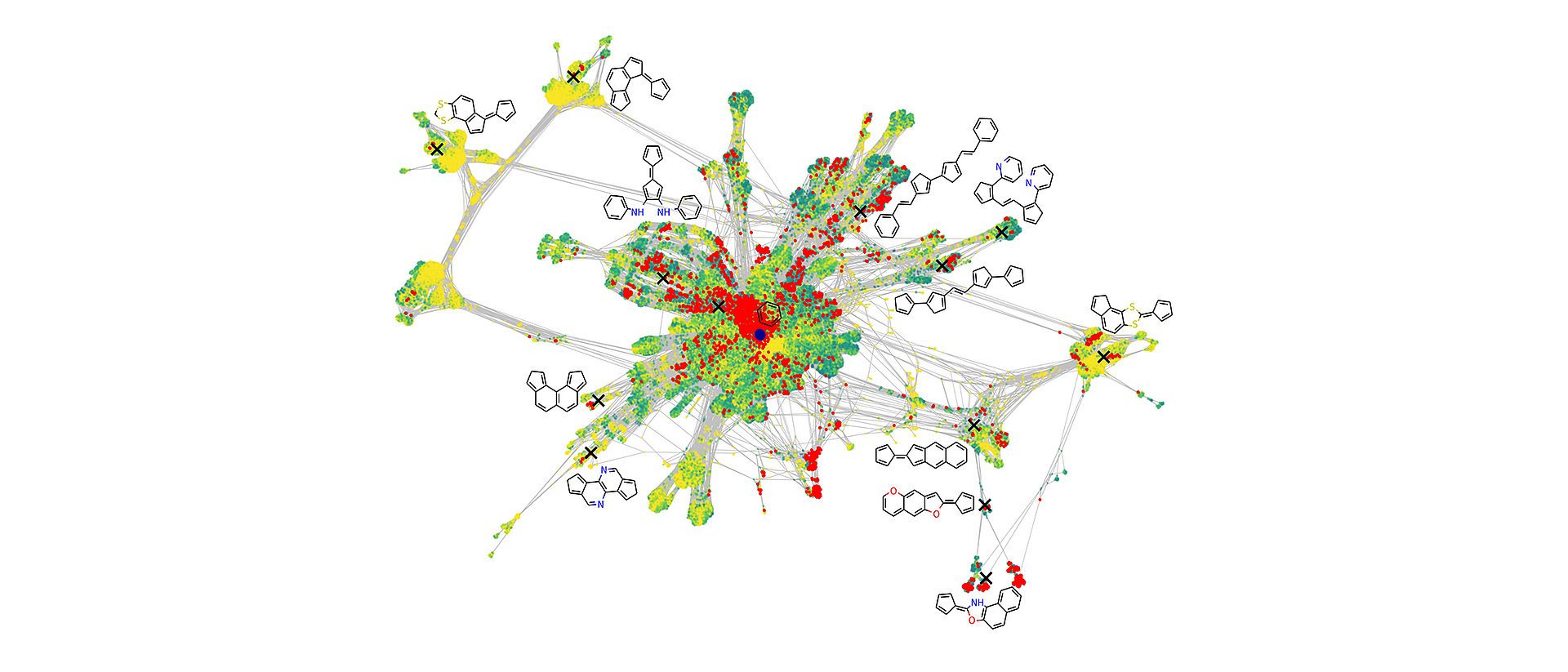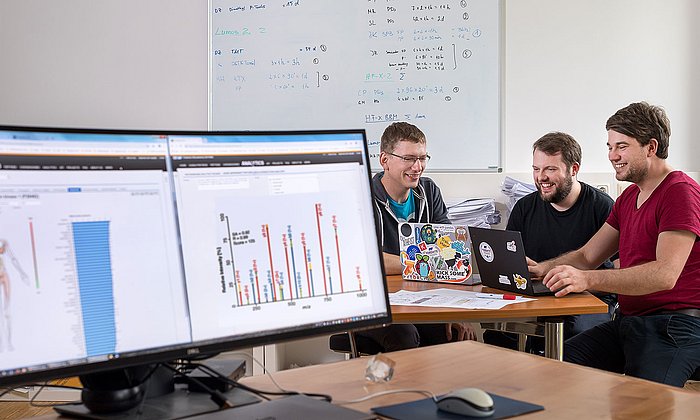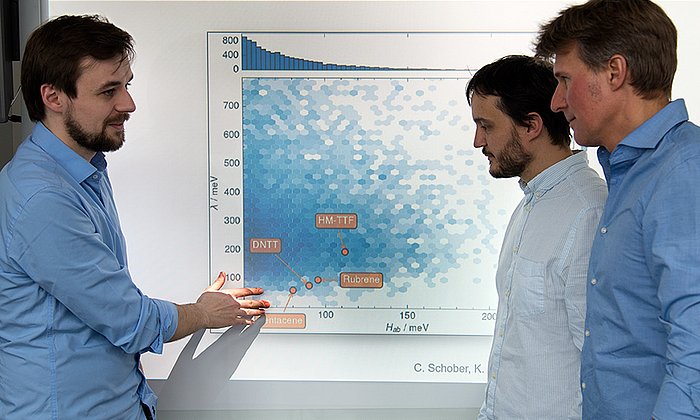Fewer requirements let artificial intelligence discover new materials
Towards new solar cells with active machine learning

How can I prepare myself for something I do not yet know? Scientists from the Technical University of Munich and from the Fritz Haber Institute in Berlin have addressed this almost philosophical question in the context of machine learning.
Learning is no more than drawing new decisions on prior experience. In order to deal with a new situation in this way, one needs to have dealt with roughly similar situations before. In machine learning, this correspondingly means that a learning algorithm needs to have been exposed to roughly similar data.
But what can we do if there is a nearly infinite amount of possibilities so that it is simply impossible to generate data that covers all situations? This problem becomes a major challenge when dealing with an endless number of possible candidate molecules.
Molecules for portable solar cells or rollable displays
Organic semiconductors enable important future technologies such as portable solar cells or rollable displays. For such applications, improved organic molecules – which make up these materials – need to be discovered. Tasks of this nature are increasingly using methods of machine learning, while training on data from computer simulations or experiments.
The number of potentially possible small organic molecules is, however, estimated to be on the order of 1033. This overwhelming number of possibilities makes it practically impossible to generate enough data to reflect such a large material diversity. In addition, many of those molecules are not even suitable for organic semiconductors. One is essentially looking for the proverbial needle in a haystack.
Active learning algorithm decides autonomously which data it needs
The team around Prof. Karsten Reuter, Director of the Theory Department at the Fritz-Haber-Institute, and Dr. Harald Oberhofer, Heisenberg Scholar at the Chair of Theoretical Chemistry, addressed this problem using so-called active learning. Instead of learning from existing data, the machine learning algorithm iteratively decides for itself which data it actually needs to learn about the problem.
The scientists first carry out simulations on a few smaller molecules, and obtain data related to the molecules’ electrical conductivity – a measure of their usefulness when looking at possible solar cell materials.
Based on this data, the algorithm decides if small modifications to these molecules could already lead to useful properties or whether it is uncertain due to a lack of similar data. In both cases, it automatically requests new simulations, improves itself through the newly generated data, considers new molecules, and goes on to repeat this procedure.
In their work, the scientists show that this approach is significantly more efficient than alternative search algorithms and how new, promising molecules can be identified in this way while the algorithm continues its exploration into the vast molecular space. Every week it proposes new molecules that could usher in the next generation of solar cells and the algorithm just keeps getting better and better.
Active discovery of organic semiconductors
Christian Kunkel, Johannes T. Margraf, Ke Chen, Harald Oberhofer andKarsten Reuter
Nature Communications volume 12, Article number: 2422 (2021) – DOI: 10.1038/s41467-021-22611-4
The research was funded by the German Research Foundation (DFG) as part of the TUM International Graduate School of Science and Engineering (IGSSE) and by the Bavarian State Government as part of the Solar Technologies Go Hybrid initiative. Simulations were carried out in the Leibniz Supercomputing Centre of the Bavarian Academy of Sciences.
Technical University of Munich
Corporate Communications Center
- Dr. Andreas Battenberg
- andreas.battenberg@tum.de
- presse@tum.de
- Teamwebsite
Contacts to this article:
PD Dr. Harald Oberhofer
Chair of Theoretical Chemistry
Lichtenbergstr. 4, 85748 Garching, Germany
Tel.: +49 89 289 54320
E-Mail: harald.oberhofer@tum.de


